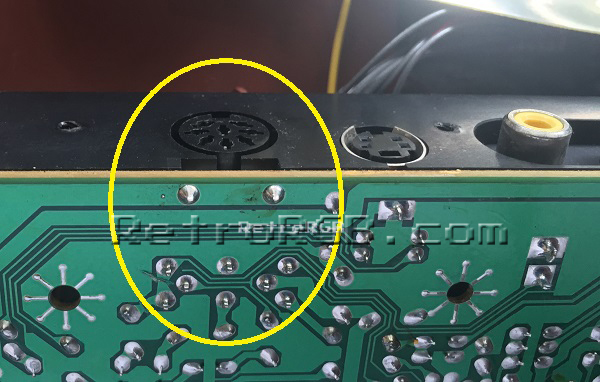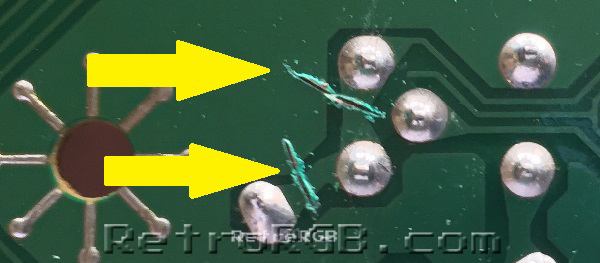Neo Geo:Neo Geo CD CSYNC Mod
- NGCD CSYNC**
I've only tested a handful of Neo Geo CD systems, but all had the same strange flaw: csync isn't connected to the multi-out! Now, unless your target device requires csync, this mod _IS NOT NECESSARY!!_ All you'll need for good performance is a shielded RGB cable, as linked to in the main Neo Geo page! If you _do_ need clean csync coming from the DIN, this guide shows you what you need.
Tools / Parts Needed:
You'll need a few tools for this mod (more info on the tools can be found in [tools.html the tools section]): \- Basic soldering skills. - Philips head screwdriver - Razor, X-Acto Knife or box cutter (something really sharp). - Soldering iron / solder - Thin gauge wire - Multimeter
This is a fairly easy mod, however it requires cutting traces on your NGCD, so please do this at your own risk!!! As an FYI: This mod gets sync directly from the CXA 1645P chip, which I believe is TTL sync. If you run your systems through [extronrxi.html an Extron device] this is fine, but do _not_ connect direct TTL sync to SCART equipmenT!! I believe adding a 680 ohm resistor to the device or cable will lower the sync to csync-level voltage, however I haven't tested on an oscilloscope yet!!!
If you'd rather not worry about TTL, you can cut the same traces, but connect luma from the S-Video connector instead...but once again, just getting shielded cables is a better solution, as devices that have compatibility issues with composite video often have issues with luma-as-sync as well.
\- Start by disassembling your NGCD. Once you've removed the top cover, unbolt the circuit board with the output connectors on it. You don't need to remove the wires, just unbolt the board and flip it over.
\- Locate the multi-out connector: 
\- If you look closely, you can see the composite video signal is routed from the Sony CXA chip, through the csync pin, through the composite video pin (both on the multi-out), then over to the actual composite video output. Use a multimeter to test the connection between the three circled pins below with the arrows points to them; They should all be connected...and if not, stop what you're doing, as you may have a revision of the NGCD I'm not aware of!! (click the picture for full-sized): [[[File:NGCDcsync02-small.jpg)](https://cdn.retrorgb.com/images/NGCDcsync02.jpg]]
\- Use the X-Acto knife to cut the traces before and after the csync pin. Don't dig too deep, just cut, then test with the multimeter until there's no connection left on either side: 
\- Add two pieces of wire to the pins shown below. The small wire will connect the composite video line from the CXA back to the composite video pin of the multi-out (and also to the actual composite video output connector, since they're still linked together).
The other wire will connect pin 10 (sync-in) from the CXA 1645P chip to pin 7 on the multi-out. If you're using an RGB SCART cable for your setup, this will send voltage that's _higher_ than the SCART spec and could damage your equipment. If you're looking for SCART-compatible voltage, you can add a resistor here, but I strongly recommend checking with an oscilloscope to make sure the output is under 1 volt (a multimeter won't work for this). Click on the image for full-sized view: [[[File:NGCDcsync04-small.jpg)](https://cdn.retrorgb.com/images/NGCDcsync04.jpg]]
Feel free to go back to [neogeo.html the main Neo Geo page]. If you'd like info on mods for other systems, head to the [/systems.html Getting RGB From Each System page] or check out [/ the main page] for more retro-awesomeness.